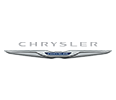Tires
The car tire is a ring-shaped covering that fits around a wheel rim to protect it and enable better vehicle performance by providing a flexible cushion that absorbs shock while keeping the wheel in close contact with the ground.
The basic materials modern tires are made of are synthetic (man-made) rubber, natural rubber, fabric, and wire, along with other compound chemicals. They consist of a tread and a body. The tread provides traction while the body ensures support. The overwhelming majority of car tires (99.9%) are pneumatic, or hollow and filled with a compressed gas, meaning they are made up of a doughnut-shaped body of cords and wires, wrapped in rubber and generally filled with compressed air (or Nitrogen in high-performance cars) to form an inflatable cushion.
Tires are a vital part of the handling, and safety systems on all vehicles.
Taking Care of your Tires
The way you take car of your tires affects your car in many ways.
The FIRST thing you want to do is make sure your tires are inflated correctly. This affects your car's HANDLING, and also can adversely affect your car's GAS MILEAGE.
How to check that your tires are inflated correctly:
- Check the tire pressure. In all four tires. Check your tire's pressure at least once a month, especially before traveling long distance or out of town. Tires with insufficient pressure will cause the tire easily of heat due to friction with the asphalt, so the tires wear faster and can endanger the safety of driving.
- Be sure to check the correct front and rear pressure of your tires. Sometimes the front and rear tires should be inflated to different pressures. The correct tire pressure for the front and rear tires can be seen on the sticker attached to the inside of the door of your vehicle, or the vehicle owner's manual.
- Check the tires pressure when "cold" For a correct measurement of tire pressure, check the pressure before you drive in the morning, or when you haven't driven the car for three hours, if possible.
- Unscrew the valve stem cap from the valve stem on the tire. The valve stem is a black pencil-sized extension near the hubcap, about 1" (2-3 cm)
- Press the air pressure gauge onto the valve stem and record the reading given. TIP: If there is a hissing sound, the gauge is not tight enough for an accurate reading. The angle of the gauge may need to be adjusted
- Check that if the reading is the same as the manual's specifications
a) If the pressures are the same as in the manual, you are done after checking all the tires for the correct pressure.
b) If the gauge shows that pressure is in any of the tires is low, then add air to the tires. Make sure you put in the correct amount, do not overfill.
- Make sure to replace the valve cap on the tire valves Driving the car for extended periods without a tire valve cover can result of excessive air leakage from inside the tire, resulting in a loss of tire pres sure. The cap does not actually hold air in, but it keeps dirt and moisture away from the valve mechanism in the valve stem, which does hold air in.
- Don't overload your car Check the maximum weight that your car can safely handle. If you regularly overload the vehicle, this can cause excessive presure on your tires, change the handling, and can create unsafe driving conditions.




